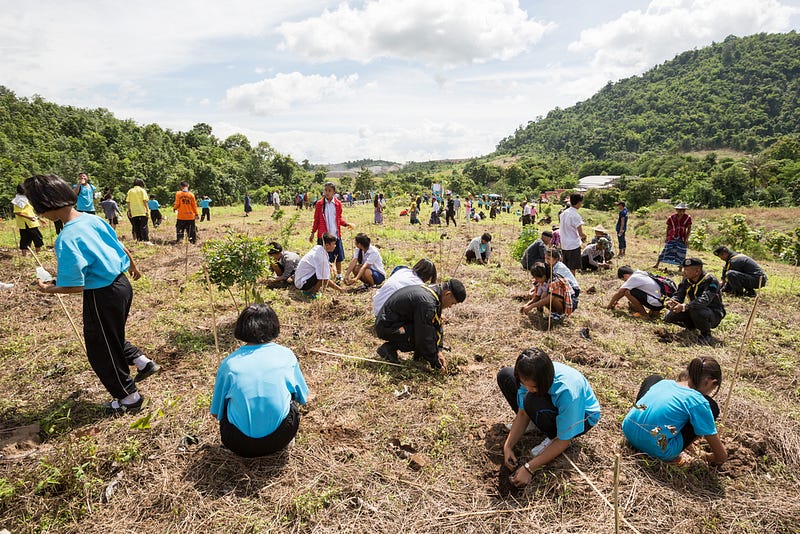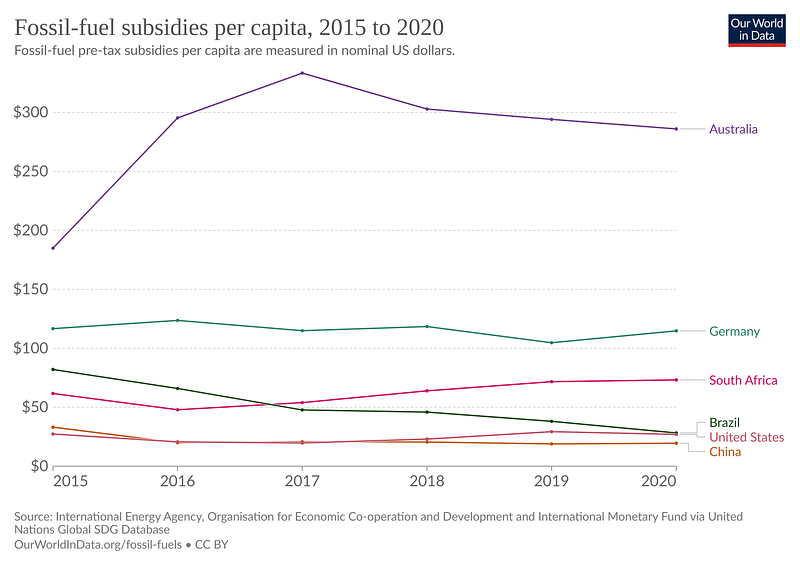# Transforming Our Global Economy: Six Essential Changes for a Sustainable Future
Written on
Chapter 1: The Need for Economic Reform
In today's world, it's evident that our systems are out of alignment. The multitude of crises we face—including climate change, species extinction, poverty, and pollution—demonstrate an urgent need for systemic change. Although we often recognize the solutions, implementation remains frustratingly slow. What stands in our way?
A significant barrier is that the current global economic framework prioritizes growth over human well-being. To truly address our challenges, we must shift towards an economic model centered on well-being.
One promising approach is known as doughnut economics, which provides a fresh perspective on global well-being. This model visualizes planetary health as a doughnut with an inner circle representing essential social foundations and an outer circle denoting ecological limits. Existing within the inner circle indicates unmet basic needs, while straying beyond the outer circle inflicts harm on our planet, risking irreversible damage.

To thrive, humanity must operate within the doughnut—between these two circles—ensuring both safety and social equity while respecting our planet's boundaries. The inventor of doughnut economics, Dr. Kate Raworth, elaborates on this concept in her compelling TED talk:
Fortunately, organizations like the United Nations endorse the doughnut economics framework. However, to see real change, additional support from governments, businesses, and individuals is crucial.
- Governments can facilitate reforms through thoughtful regulations.
- Business leaders can prioritize justice and resource efficiency.
- Individuals can adopt more sustainable lifestyles.
Chapter 2: Six Strategies for a Well-Being Economy
To transition our global economy towards one grounded in well-being, we can implement several key strategies:
2.1 Rethinking Economic Indicators
The first step is to move away from using Gross Domestic Product (GDP) as the primary measure of economic success. While GDP tallies the total value of goods and services produced, it fails to account for the quality of life or the sustainability of resources. For instance, GDP can increase due to expenditures on disaster recovery or healthcare without reflecting genuine improvement in societal well-being.
In a thought-provoking TED talk, the shortcomings of GDP are illustrated through an analogy of an airplane that only gauges altitude, neglecting direction or fuel efficiency:
Instead of GDP, we can adopt the Genuine Progress Indicator (GPI), which accounts for both the benefits and costs of economic activities, including non-financial contributions such as unpaid labor and environmental health.
2.2 Implementing Social Cost Pricing
Another essential strategy is to introduce social cost pricing, where consumers pay the true societal costs of goods and services. This approach reveals the hidden expenses of environmental degradation and social inequality that often go unrecognized.
For instance, social cost pricing can encapsulate the economic impact of job losses due to outsourcing and environmental harm from manufacturing practices. While this may lead to higher consumer prices, government intervention can mitigate the effects through taxes that support ecological recovery initiatives.
2.3 Restoring Natural Processes
Restoring our planet's natural processes is critical for maintaining the ecosystem services upon which humanity relies. These services, valued at over $125 trillion annually, include everything from water purification to biodiversity support.
To protect these invaluable services, government policies should prioritize environmental restoration and conservation efforts.

2.4 Relocalizing Production
Relocalization focuses on reviving local production systems, which can enhance food security and minimize greenhouse gas emissions. By fostering local economies, we can create jobs, promote community stability, and reduce the environmental impact of long-distance transportation.
Adjusting trade policies to support local production can facilitate this shift, allowing regional businesses to compete more effectively in the market.

2.5 Ending Harmful Subsidies
Eliminating subsidies for environmentally harmful industries is another crucial step. Governments often financially support industries that negatively impact the environment, such as fossil fuels and logging, leading to unsustainable practices.
By reallocating these funds towards sustainable industries, we can create a more equitable and environmentally friendly economy.

2.6 Reforming Land Ownership
Finally, reforming land ownership to empower communities and indigenous groups can foster environmentally sound management practices. This shift promotes long-term sustainability over short-term profit, contributing to biodiversity and ecological health.
Governments play a vital role in regulating land reforms to protect against overexploitation and environmental degradation.
Conclusion
In summary, transforming our global economy to one centered on well-being involves replacing GDP with better indicators, implementing social cost pricing, restoring natural systems, relocalizing production, eliminating harmful subsidies, and reforming land ownership.
How You Can Contribute
Individuals can take action by:
- Educating themselves about alternative economic systems, like doughnut economics.
- Volunteering for projects that focus on ecological restoration.
- Supporting local products and practices.
- Growing their own food or participating in community gardens.
- Considering social and environmental factors when making purchases.
We invite you to share your ideas on how we can collectively foster a well-being-based economy for a healthier planet.
Credit
This article draws from the work of Barnard, P., et al. (2021). "World scientists’ warnings into action, local to global." Science Progress, 104(4), 00368504211056290.